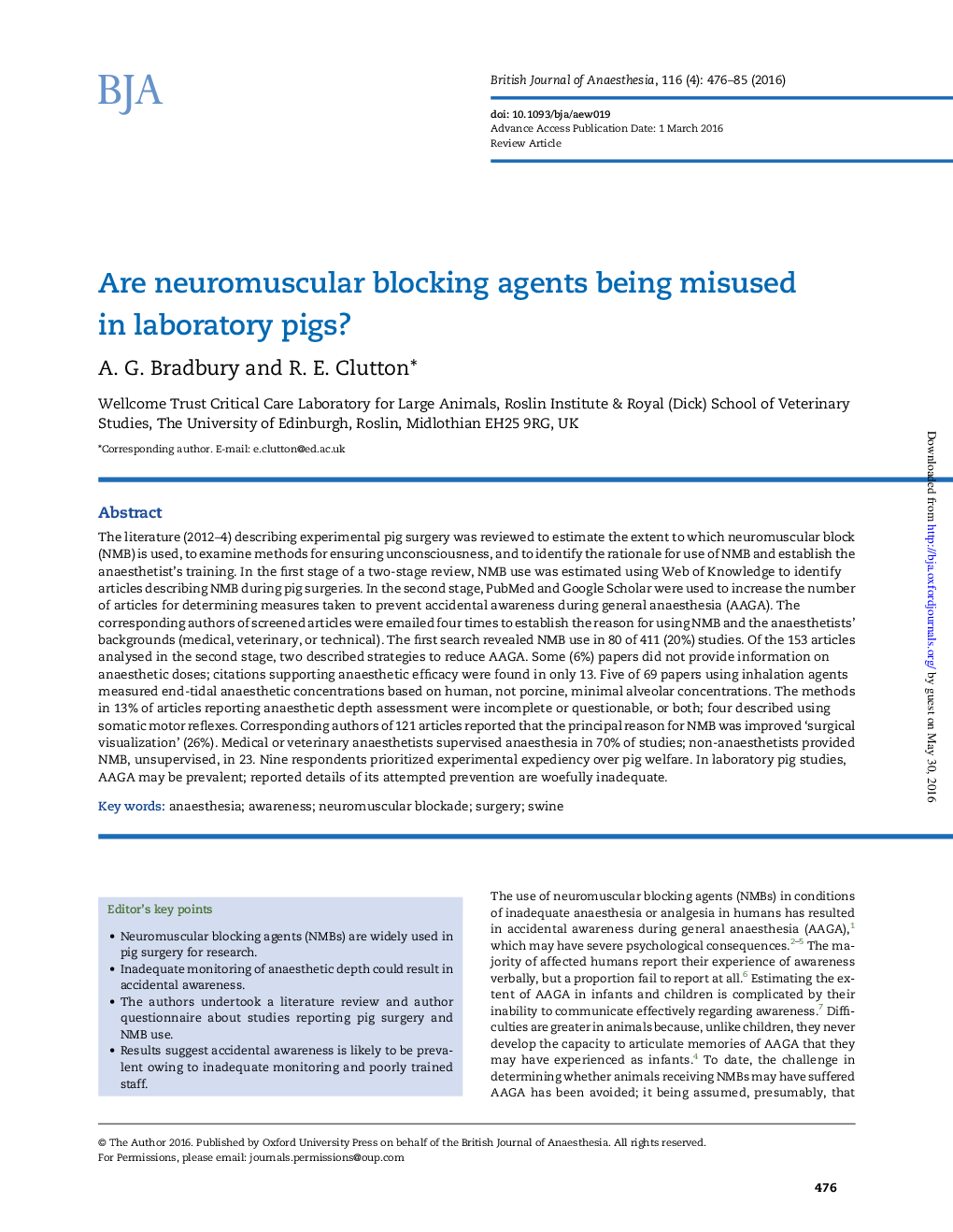| Article ID | Journal | Published Year | Pages | File Type |
|---|---|---|---|---|
| 8931057 | British Journal of Anaesthesia | 2016 | 10 Pages |
Abstract
The literature (2012-4) describing experimental pig surgery was reviewed to estimate the extent to which neuromuscular block (NMB) is used, to examine methods for ensuring unconsciousness, and to identify the rationale for use of NMB and establish the anaesthetist's training. In the first stage of a two-stage review, NMB use was estimated using Web of Knowledge to identify articles describing NMB during pig surgeries. In the second stage, PubMed and Google Scholar were used to increase the number of articles for determining measures taken to prevent accidental awareness during general anaesthesia (AAGA). The corresponding authors of screened articles were emailed four times to establish the reason for using NMB and the anaesthetists' backgrounds (medical, veterinary, or technical). The first search revealed NMB use in 80 of 411 (20%) studies. Of the 153 articles analysed in the second stage, two described strategies to reduce AAGA. Some (6%) papers did not provide information on anaesthetic doses; citations supporting anaesthetic efficacy were found in only 13. Five of 69 papers using inhalation agents measured end-tidal anaesthetic concentrations based on human, not porcine, minimal alveolar concentrations. The methods in 13% of articles reporting anaesthetic depth assessment were incomplete or questionable, or both; four described using somatic motor reflexes. Corresponding authors of 121 articles reported that the principal reason for NMB was improved 'surgical visualization' (26%). Medical or veterinary anaesthetists supervised anaesthesia in 70% of studies; non-anaesthetists provided NMB, unsupervised, in 23. Nine respondents prioritized experimental expediency over pig welfare. In laboratory pig studies, AAGA may be prevalent; reported details of its attempted prevention are woefully inadequate.
Related Topics
Health Sciences
Medicine and Dentistry
Anesthesiology and Pain Medicine
Authors
A.G. Bradbury, R.E. Clutton,
